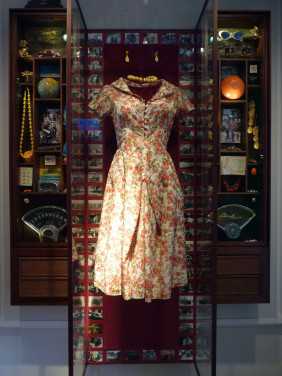Istanbul: Journey to Another World
by Julian Loose
A Trip to the Museum of Innocence
 For many readers, a first visit to Istanbul can seem an oddly familiar experience, reminding us at every turn of the writing of Orhan Pamuk; we recognise the great mosques and the old wooden buildings, the ships on the Bosphorus and the hectic modern streets.
For many readers, a first visit to Istanbul can seem an oddly familiar experience, reminding us at every turn of the writing of Orhan Pamuk; we recognise the great mosques and the old wooden buildings, the ships on the Bosphorus and the hectic modern streets.
The Bosphorus
Pamuk says he became the unofficial laureate of Istanbul almost by accident, simply by recording the world he knew. Certainly his spectacular success has given him emblematic status, with all the mixed benefits this brings. But grand comparisons to other city writers – to Joyce, Proust, Dostoyevsky – have not daunted his ambition to push his association with Istanbul even further. Last week saw the opening of the ‘Museum of Innocence‘ – the culmination of a project that has shadowed his novel of the same name from the very start.
The museum is the result of years of planning and hard work, attention to detail and creative argument on the part of Pamuk and his team of artists and designers. From this week, you can walk through the door of an unremarkable house in a back street of Istanbul’s Nişantaşı district – and enter the world of his novel. Orhan is surely the first writer to push an entire house through the membrane that usually separates imagination and reality.
The Museum of Innocence is a very unusual love story. For all its great melodrama and set pieces, this is a novel which excites the reader most during the long periods where nothing much happens, and we are treated instead to rich digressions on countless aspects of bourgeois Istanbuli life. It is a kind of time machine which transports us back to the seventies, to an Istanbul which is a poorer, more isolated and more individual city than that of today.
To visit Turkey now is to witness a dynamic country increasingly confident in its new leadership role, boosted by an economy growing faster than most of Europe. In Istanbul itself, countless Starbucks and even a Trump Tower shopping mall are just a small part of the construction boom that is reshaping the city. Turkey’s writers and artists have evidently assumed a new cultural confidence too, thanks in no small measure to Orhan Pamuk’s international recognition.
The museum takes part in this modern resurgence, but at the same time turns its back on it. Once inside, we are surrounded by the ephemera of a lost and undervalued period: the glasses of linden tea, the salt cellars, the football cards, the newspapers with their adverts and gossip columns, the food, the shoes, the clocks, the movie kisses, the kitsch ornamental dogs, children’s dolls and tricycles, the quince graters and cigarette butts. Most of these objects are placed within ‘vitrines’ or cases, one to each chapter, and all set beautifully within the larger casement that is the house itself. By their placement and associations, and with their superb titles (’57: On Being Unable to Stand Up and Leave’), the objects generate the magical electrical field of a Joseph Cornell box.
It is difficult to distinguish the success of this museum from the novel that is its twin. Each lends the other both substance and an air of intangible melancholy. Indeed, the novel was itself originally conceived as a museum catalogue, although this proved impossible in narrative terms. Pamuk will, however, be publishing a catalogue to the museum proper, later this year. Again, this will not be a straightforward exercise. The museum is – quite deliberately – left unfinished. Some boxes are not yet arranged to the author’s satisfaction, and are shielded with curtains like miniature theatres. And Orhan has talked playfully of adding to the museum, although it is not clear whether this means he will also be adding to the book.
The official museum website suggests that visitors do not necessarily need to be familiar with the novel. What would it be like to climb up through the floors of this memory palace without having first read the book? The boxes and displayed artefacts suggest an obsessive love, although it might not be clear if the object of devotion is the mysterious woman Fusun (who never shows her face) or the city of Istanbul (which certainly does, in a thousand details). A casual visitor would remain unaware that some of the documentary material in the displays is itself a fiction – that the splendid ‘Jenny Colon’ handbag is a kind of double fake, that the yellowing newspaper articles are in truth recently printed, or that the vintage clip of the advertising film for the drink ‘Meltem’ features a young German model currently working in Turkey.
But for the reader of Orhan’s book, the effect is more than uncanny. To follow the map in the front of the Museum of Innocence up the winding street of Çukurcuma Caddesi, to present a copy of the novel to the guard for his official stamp and for free entry to the museum – exactly as you are urged to do by the story’s hero Kemal Basmaci – is to complete an extraordinary circuit, and to feel that you have arrived at an essential destination.
via Istanbul: Journey to Another World : The Thought Fox.

Leave a Reply